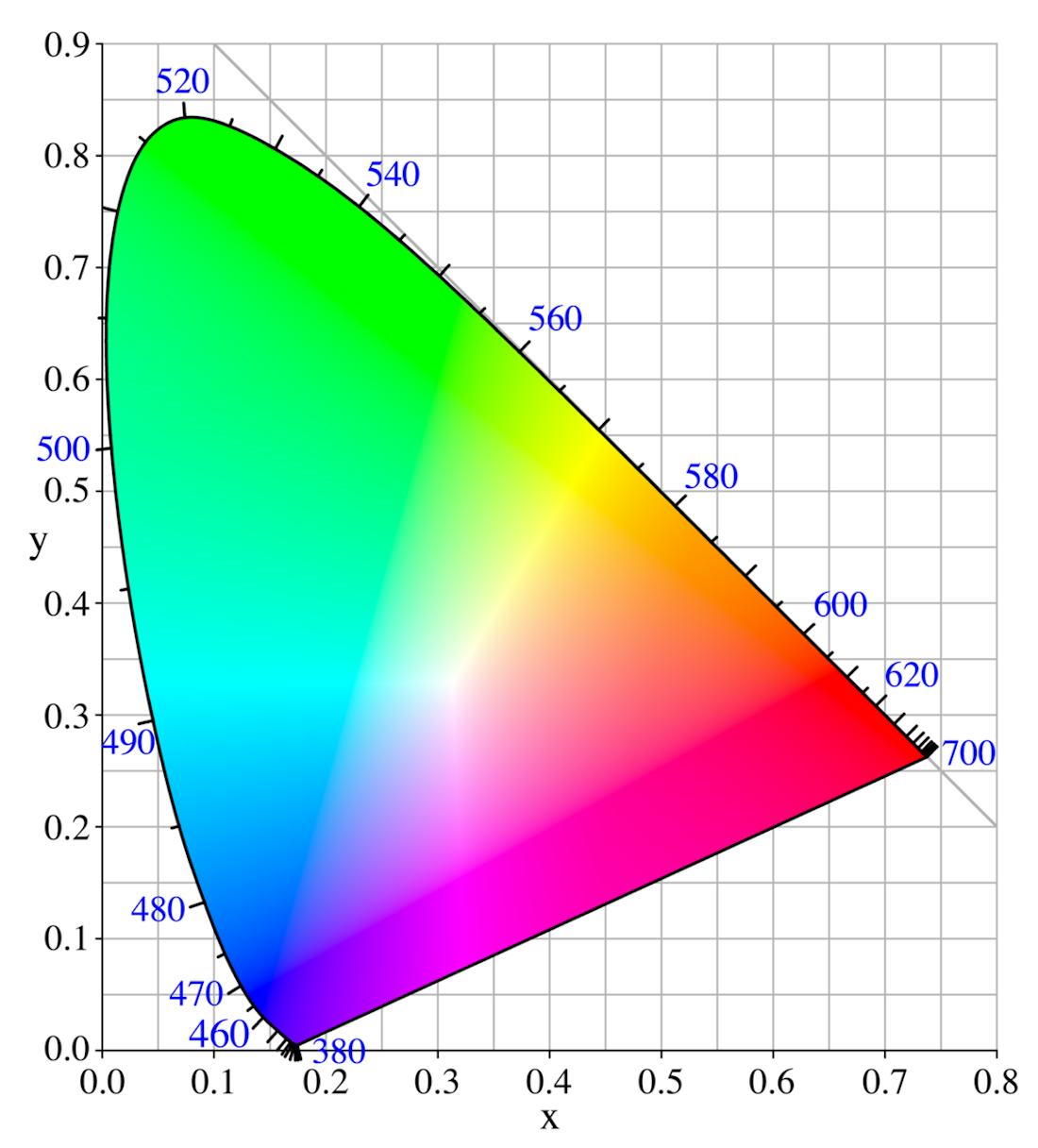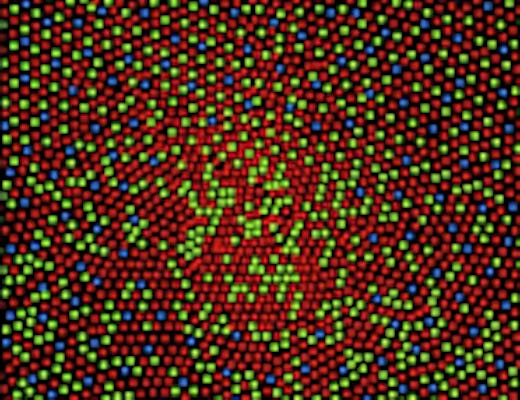Color measurement and white point adjustment for automotive R&D
The quality of lighting and displays in the automotive industry are critical design factors. Accurately measuring the colors emitted from the lights and displays enables precise, high-quality results.

Figure 1: Lighting and displays are an essential aspect of vehicle design. Image credit: pixabay.com/xusenru.f
The automotive market is becoming increasingly competitive. Consumers are demanding better, safer, more reliable vehicles that provide a more enjoyable driving experience. As a result, there has been a flurry of technological advances in the automotive industry in recent decades. Automotive design and lighting are no exception to this trend, with a number of significant innovations.
Automotive lighting research enhances efficiency and design
Exterior vehicle lights have advanced rapidly from halogen lamps introduced in the 1970s, to xenon lamps introduced in the 1990s to full LEDs headlamps introduced in 2006.
LED headlamps offer longer lifetimes, increased efficiency, and reduced energy consumption compared to their predecessors. What’s more, adaptive driving beam technologies introduced in 2014 now allow headlights to adapt to every driving situation automatically.
Laser lights represent the latest trend in headlights, offering diodes that are a fraction of the size of LEDs while providing superior efficiency, quality, and performance.1-4
Interior lighting is also becoming an increasingly important part of vehicle design, as studies have shown that ambient interior lighting can improve vehicle attractiveness, perceived safety, and space perception.
LEDs are the main lighting source currently used in interior lighting, but there is continued research into OLEDs, which offer increased design flexibility, and optical fibers, which offer compactness.
While interior lighting is currently focused on providing a superior driver experience, the introduction of autonomous vehicles could completely change how we interact with our vehicles.6,7
Color quality of vehicle lighting and displays is an essential design consideration
Measuring and adjusting optical properties of vehicle components during research and development ensures a high-quality product and increased customer satisfaction. Automotive OEMs and vehicle manufacturers aim to plan their lighting and design schemes precisely to meet consumer and regulatory demands.
Unfortunately, mass production processes can result in small variations in material structure, composition, and thickness that result in spectral variations and color differences in lights and automotive displays.8-10
White point adjustment and color reproduction are an essential part of quality control in automotive research and development. Color measurement can be done using a colorimeter or spectroradiometer.11-13
Measuring color – colorimeter or spectroradiometer?
While both devices offer a ‘correct’ measurement of color, they do so in very different ways. As a result, the context of the measurement often determines the best choice of device.11-13
Colorimeters measure color according to a set of coordinates (XYZ which are related to red, green, blue) in a similar way as the human eye does. When you measure color with a colorimeter, you get three values that can be translated to a color point in, for example, the CIE 1931 diagram.
One of the drawbacks of using a colorimeter to measure color is that often the same color can be achieved using different spectrums of light. Colorimeters, therefore, would not be able to tell the difference between several varieties of white light, but this does not mean that the lights are spectrally the same.11,12

Figure 2: CIE 1931 diagram.
Spectroradiometers internally disperse the light and measure the intensity of each wavelength. As a result, spectroradiometers can differentiate between different spectrums of light that all appear the same color, for example different varieties of white light (see Figure 3). 11-13

Figure 3: Spectra of several “white” light sources measured using a spectroradiometer. Image credit: Admesy.13
Both light analysis devices have advantages and disadvantages. While
spectroradiometers give a more detailed measurement of the light source,
they are often more expensive and slower.
Still high-end colorimeters, like the Admesy Prometheus series, can be very accurate for color measurements and routine comparisons. Their main benefit is the extremely high measurement speed. As a result, they are essential for quality control and are often used in the production and inspection phases of manufacturing. Spectroradiometers, on the other hand, offer a greater degree of specificity, flexibility, and versatility. But depending on the specific needs can also be a good fit for production applications as well.
In general Spectroradiometers are the ideal and versatile solution for the vehicle
research and development process including color formulation and
lighting system development.12-15
Last not least an important third category are 2D imaging colorimeters. They combine the speed of a colorimeter with the ability to measure not only a single spot, but capture a 'measurement image', where each pixel translates to a colorimetric measurement value.
Color measurement solutions from Admesy
Admesy provides a broad range of instruments focused on color and light measurements including spectroradiometers, colorimeters and 2D imaging solutions that are ideal for a range of automotive development and manufacture applications.
The Prometheus colorimeter offers near perfect CIE 1931 filter characteristics combined with high sensitivity and low noise circuitry, resulting in a high-performance colorimeter in a robust and user-friendly system.
For applications that require a spectroradiometer, Admesy offers two
spectral high-end measurement options: the Neo and Prometheus series. The Neo series offers
spectral measurement solutions in many different setups, while the Prometheus series provides radiance and luminance measurements with a support of an electronic viewfinder .16
As an imaging colorimeter Admesy offers the Helios and Titan series.
Contact us to discuss your specific measurement needs and find the best fit for your measurement needs.
References and Further Reading
- ‘Fundamentals of Automotive and Engine Technology’ — Reif K, Springer, 2014.
- ‘A review on light-emitting diode based automotive headlamps’ — Long X, He J, Zhou J, Fang L, Zhou X, Ren F, Xu T, Renewable and Sustainable Energy Reviews, 2015.
- ‘Solid-State Automotive Lighting: Implications for Sustainability and Safety’ — Bullough JD, Sustainable Automotive Technologies, 2012.
- ‘The Next Step — Pure Laser High-Beam for Front Lighting’ — Fiederling R, Trommer J, Feil T, Hager J, Auto Tech Review, 2016.
- ‘Reality Check: Laser High Beam Performance in Real Driving Tests’ — Albrecht KF, Austerschulter A, Rosehahn EO, 11th International Symposium on Automotive Lighting, 2015.
- ‘Influence of ambient lighting in a vehicle interior on the driver’s perceptions’ — Caberletti L, Elfmann K, Kummel M, Schierz C, Lighting Research and Technology, 2010.
- ‘Effects of Automotive Interior Lighting on Driver Vision’ — Flannagan MJ, Devonshire JM, The Journal of the Illuminating Engineering Society , 2012.
- ‘Colorimetry Applications In The Automotive Industry’ — Chao MK, Hake BP, Electro-Optical Instrumentation for Industrial Applications, 1983.
- ‘ Advanced Imaging Colorimetry’ — Konjhodžić Đ, Khrustalev P, Young R, Information Displays, 2015.
- ‘11th International Symposium on Automotive Lighting’ — Khanh TQ, Herbert Utz Verlag, 2015.
- ‘Colorimetry: Fundamentals and Applications’ — Ohta N, Robertson A, John Wiley & Sons, 2006.
- ‘Measuring color in a world of light’
- ‘Spectrometry: General Spectrometry’
- ‘Visual and Instrumental Assessments of Color Differences in Automotive Coatings’ — Gómez O, Perales E, Chorro E, Burgos FJ, Viqueira V, Vilaseca M, Martínez-Verdú FM, Pujol J, Color Application and Research, 2016.
- ‘Prometheus Series Colorimeter’
- ‘Neo Series Spectroradiometer’

